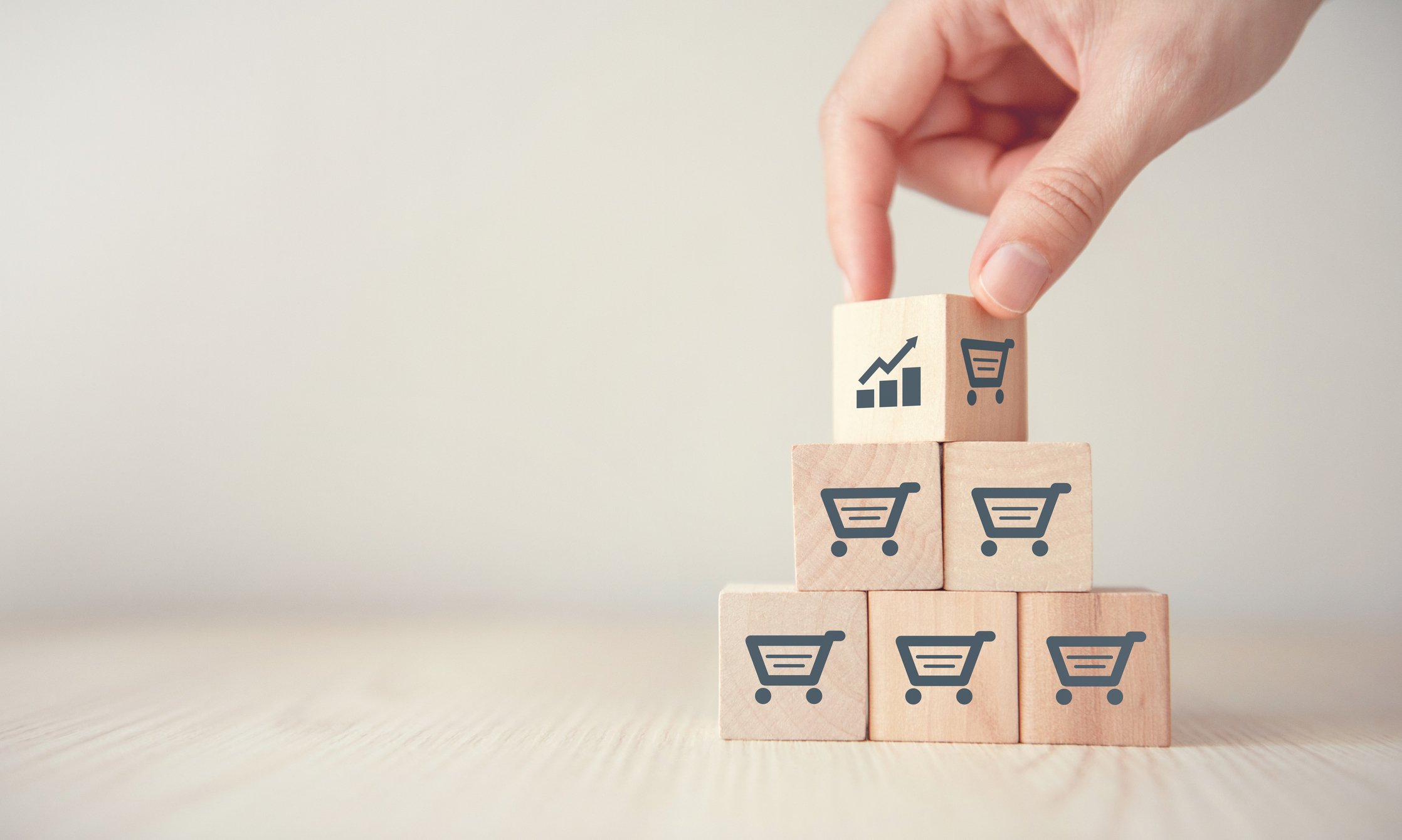
We are no longer living in an era where cold calling, cheesy TV commercials, and emails without personalization are driving sales. To enhance the e-commerce customer experience, it's becoming increasingly necessary to focus on buyer behavior, buyer interests, and to engage buyers in a personal way.

It is also important to note that enhanced customer experience rakes in 5.7 times more revenue, which is why you can't afford to overlook it. You need the right tools to automate your e-commerce operations, and that's where HubSpot comes in handy.
As an inbound sales, marketing, service, and CRM platform, HubSpot is an award-winning tool that facilitates the inbound implementation of businesses. By adopting HubSpot e-commerce, you'll enjoy several benefits, including enhancing customer experience, attracting more clients, and generating more e-commerce sales leads.
Here are a few ways HubSpot can help you grow your e-commerce business.
Part of the reason for investing in e-commerce is to increase revenue and expand the reach of your operations. However, you can't get the full benefits of e-commerce if you don't invest in the right tools and have the know-how to use them. Here are 10 ways HubSpot can help you increase revenue and grow your online business.
HubSpot allows you to visualize, customize, and personalize workflows through automation. You can use them to create sophisticated, targeted workflows to personalize communication and follow up with every contact in your HubSpot CRM. Automated workflows will free up gobs of your time while giving your customers the personal attention they want.
Using RFM (Recency, Frequency, and Monetary value) analysis allows you to create different customer segments. RFM analysis is a popular, easy-to-use segmentation technique that gives marketers the ability to analyze customer performance. Since RFM analysis focuses on specific customer characteristics, you can craft campaigns that will appeal specifically to each segment.
Creating custom fields to store data that's unique to your business is easy to do in HubSpot. The custom fields can take on one of a dozen possible types:
Even though your custom fields aren't among the out-of-the-box fields HubSpot provides, they'll receive the same benefits. You'll be able to use your custom fields to segment contacts, target for marketing campaigns, include in automated workflows, and everything else HubSpot can do. The flexibility is amazing!
Through HubSpot, you can create lists using any attribute, including buyer persona, demographics, and interactions with your website or emails. Segmenting contacts into lists is nothing new, but HubSpot goes a step further. HubSpot allows you to create smart lists that automatically add and remove contacts. You can take advantage of the dynamic nature of smart lists to engage contacts at the right time with the right message. Smart lists are a popular way to enroll contacts into HubSpot's automated workflows. When a contact becomes or stops being a member of a list, the event can be used as an enrollment trigger.

Acquiring new leads is much tougher than trying to convert the ones you already have. For that reason, it's a good idea to put some attention on the leads you're already aware of. HubSpot has tools to help you engage these leads and improve your conversion rates.
Statistics show that the number of individuals redeeming online coupons continues to increase with the possibility of reaching 145.3 million users in 2021. That is a confirmation that coupons and discounts have a direct impact on customer spending. You can use HubSpot and an app from the HubSpot Marketplace auto-generate the single-use coupon codes. Use them to encourage a desired outcome based on the behavior of your prospect or client.
Cart abandonment is a common concern among e-commerce entrepreneurs. HubSpot allows you to create sophisticated campaigns to help recover abandoned shopping carts. They can be much more elegant than the abandoned cart feature of your e-commerce platform. Of course, if your cart abandonment rate is unusually high, you should identify why and fix the problem instead of relying heavily on abandoned cart campaigns.
Most marketers want to stay up-to-date on the different stages of the sales pipeline. HubSpot lets you create separate sales pipelines so you can have one specifically tailored for your e-commerce orders. There are integrations available for many e-commerce platforms, and when they're installed, they'll create an e-commerce sales pipeline automatically.
HubSpot represents each order in the e-commerce sales pipeline as a "Deal." When shoppers add items to their shopping carts, a Deal is automatically created in HubSpot. You can trigger powerful automated workflows as "Deals" move from one stage in the sales pipeline to another. The workflows can keep your customer and staff informed about what's happening with the order. HubSpot's powerful abandoned cart workflows are triggered by this functionality.
Deals are also an object in HubSpot's rich reporting engine. With it, you view insightful predefined reports or easily customize your own. These are updated in real time and can be emailed to a distribution list you define.
Data collection and the ability to utilize the data in a single platform will give you a deeper understanding of your customers' buyer's journey. HubSpot makes it extremely easy to collect the data. In most cases, it happens automatically.
Scrutinizing the data HubSpot collects give you an opportunity to identify where you can improve your conversion rates. Knowing where to improve is an important step to leveraging the full capabilites of e-commerce.
Focusing on products and services that are in high demand is a good way to get the most out of your marketing budget. You can use the data collected by HubSpot to see which products are getting the most attention and develop a strategy for how to get the most from them.
I'm sure you already know which products and services you're selling the most. But that doesn't necessarily mean that those are the ones getting the most attention. You may discover that you have products or services whose webpages are seen by a lot of eyeballs, but those visits aren't translating into sales. Improving the customer experience of those visits may result on a new top performer.
Up to know I've been sharing information on what you can do with the data in HubSpot. But only briefly mentioned how all this data gets into HubSpot. Because HubSpot is such a popular and powerful tool for e-commerce, there are integrations available for most of the leading e-commerce plaforms.
Some of the integrations are offered by HubSpot for free. An example is HubSpot's integration for Shopify. Others are offered by third party developers like Unific. The solutions from third party developers aren't free, but many of them - like the ones from Unific - are very powerful and well thought out.
Installing an integration for HubSpot on your e-commerce site causes data to automatically propagate into the HubSpot CRM. You won't have to manually create records in HubSpot for your e-commerce prospects and customers.
Most of the available HubSpot integrations will install a HubSpot tracking code on the pages of your e-commerce website. If it doesn't, don't worry. It's not difficult to do manually. If you're not comfortable doing it yourself, reach out to HubSpot or a HubSpot Solutions Provider (like us).
Once the tracking code is installed, the browsers of visitors to your online store will receive a tracking code called a cookie. Once they become a contact in your HubSpot CRM, their interactions with your website are recorded. You'll be able to see what webpages they visited each time they come to your website.
"So what?" you say. The amount of insight you gain is powerful. Google Analytics gives you anonymous data about website visitors, their collective sessions, and page views. That's good information, but HubSpot go a step further. If they're already in your HubSpot CRM, you'll be able to tell you who these people are. You can use this information for targeted marketing.
Consider this example. One of your contacts is on your website looking at a page about a pair of shoes, but leaves without adding it to the shopping cart. Because the person didn't enter the online checkout process, you don't have the information you need to send an abandoned cart email. However, the fact the contact visited the page will appear in the HubSpot activity stream and you can use that event to kick off an email marketing campaign to that individual promoting the pair of shoes. Pretty cool stuff!
Eniture Technology specializes in helping e-Commerce merchants grow by providing useful information, digital marketing services, off-the-shelf apps that solve common problems, and custom programming services. Please contact us if you need help growing your online business or implementing the concepts presented in this blog post.
Interested in learning more? Start with our free guide on how to increase online sales, and subscribe to our blog!
GET IN TOUCH
Phone: 404.369.0680
info@eniture.com
320 W. Lanier Avenue
Suite 200
Fayetteville, GA 30214
© 2015 Eniture LLC. All rights reserved.